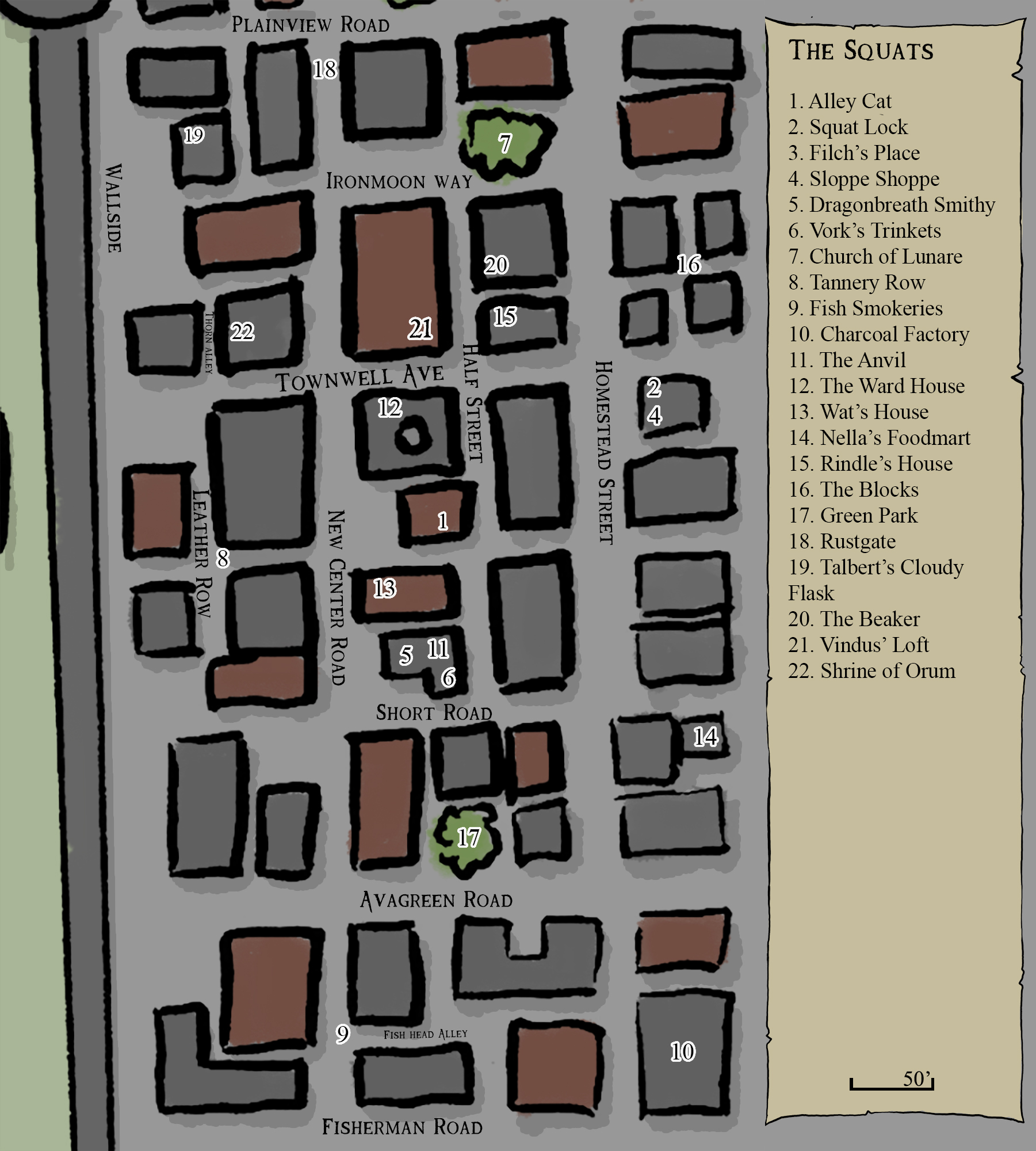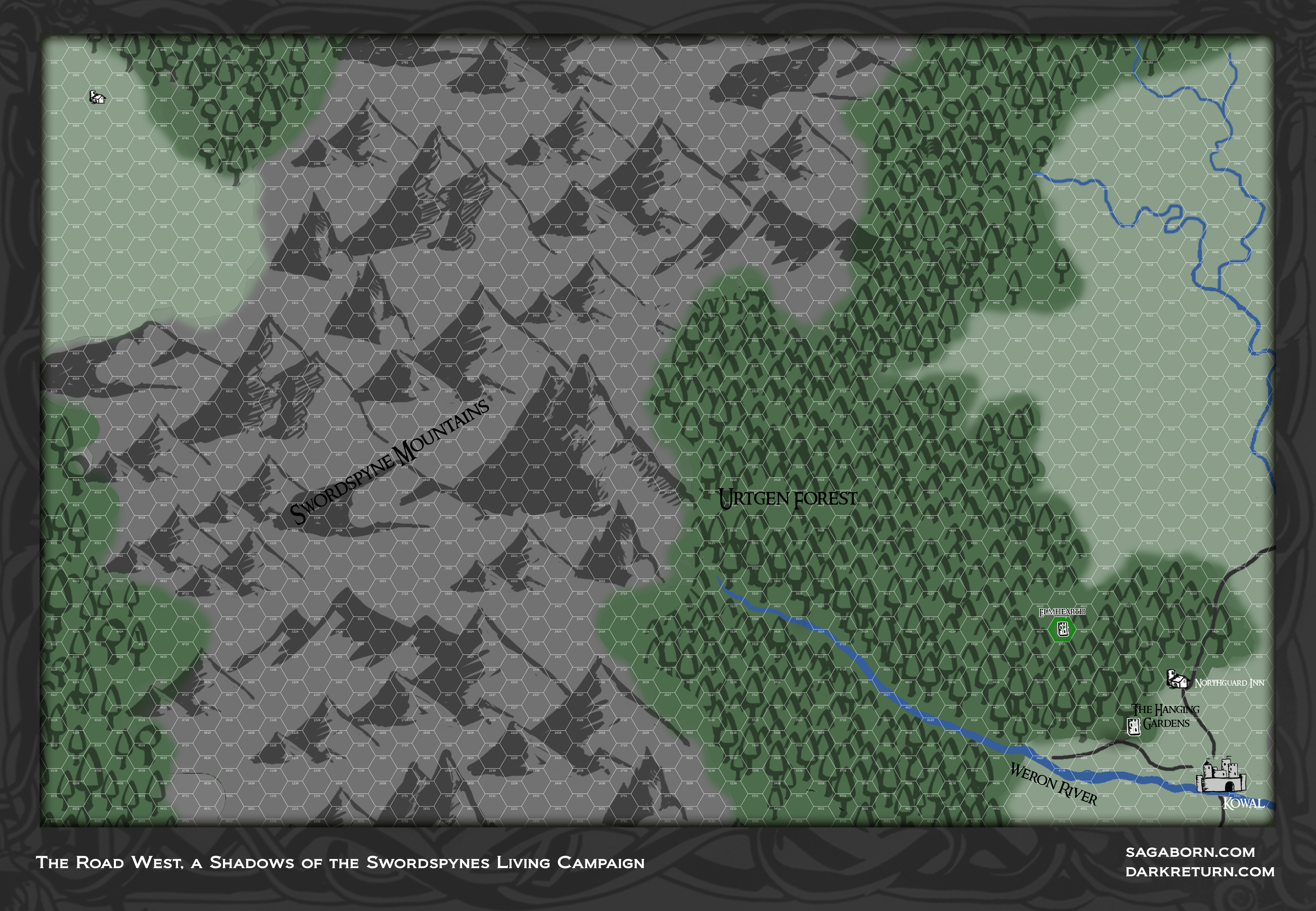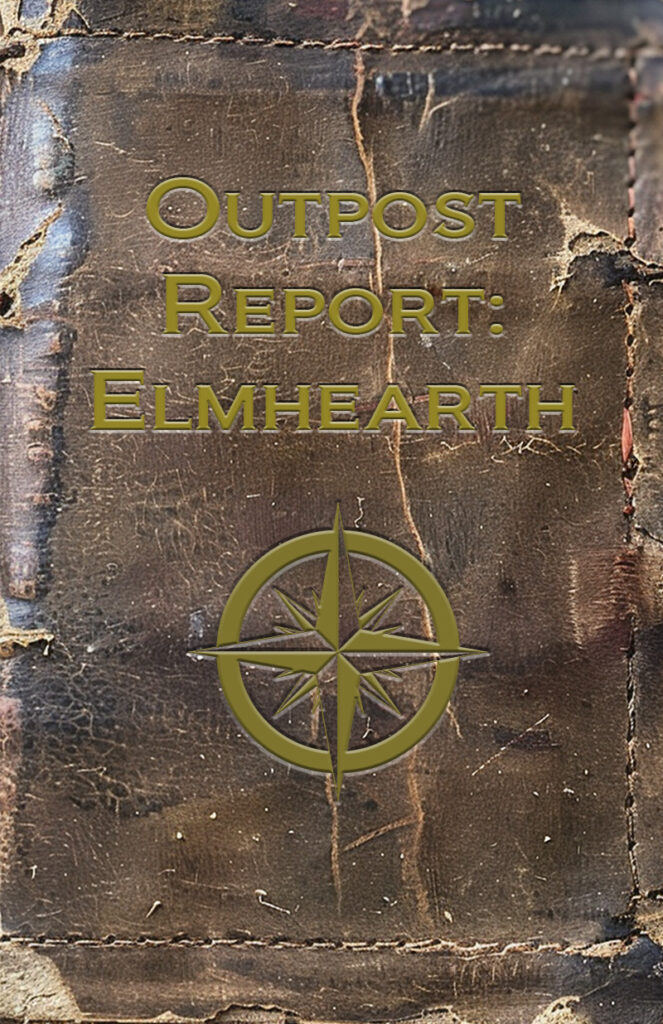Led by Betrice Almorrow, the Muddy Bank Ship Company has flourished under her. It had always been one of the smallest merchant companies in the city, but Betrice has aggressively pursued all paths to bigger profits. She has formed many connections in Jaeldor and hopes to open a sister office in the large city.
Archives
the new test
testing new widget
The Red Night
On Novro 21st, 5704 the Red Guard locked the city of Kowal under martial law.
Due to overt activity of heretics and magic users, the Red Guard declared control over the city. A citywide curfew was instilled, as well as some house to house searches.
The Red guard led massive raids on multiple safehouses of “witches”.
Aftermath:
A mass exodus of the city as fear of being declared a heretic spreads though the citizens. The Red Guard struggle with the turmoil in the city as a group, nicknamed the Heroes of Dwarftown, disrupted a ceremony of burning some heretics at the Grey Court. Parts of the city were set on fire, the Baron publicly denouncing the Red Guard, and the apparent death of the Archbishop Gunderlan.
Looking for a safe haven, many flee to Elmhearth, as news of a refugee camp and sanctuary spread.
The Road West: A Westmarches D100 Campaign
Getting Started: Campaign Quick Start Guide
Road West Campaign Rules
The Road West is a campaign that takes place in the Eastlands of Atheles. It centers on the stronghold of Elmhearth, and the Wanderers Guild, of which all adventures in the campaign are a part of.
Elmhearth was once just an outpost for the Wanderers, an adventurers guild. The nearby metropolis, Kowal, has fallen to dark times. You and others have fled to Elmhearth as a sanctuary. But for Elmhearth to survive, you must help its overseer, Helfen. The refuge needs food, protection, and especially gold. The Wanderers, the adventurers guild, wants a road out of Uthgard into the West. So besides helping supply the encampment, you are also tasked with taking expeditions into the wilds. You should map the best routes for roads, establish strongholds, and tame the wilderness so that there is a safe road west.
The Road West is also a way to test the newly designed SagaBorn Basic Roleplaying Edition. The game was submitted to Chaosium for their designer contest and needs people to help test it and refine the system.
Intro
You find yourself in Elmhearth, an outpost for the Wanderers. Kowal has become too dangerous for those who don’t fit within the city’s narrow cultural norms. You have come here for sanctuary and, hopefully, to start a new life away from the oppressive city.
What is the campaign?
Shadows of the Swordspyne is a living campaign, which will be run much like a West Marches campaign ( see Matt Colville’s video on it: https://youtu.be/oGAC-gBoX9k). Adventures will be player driven, and as we grow, we will add new SGs, new strongholds, and new players.
How is it played (aka how is it a living campaign)?
Elmhearth is a encampment which has become refuge for people leaving the turmoil of the city. The players will all work for the Wanderers, but the game will hinge on their participation. The players have to form a group, decide what they want to do, and contact a GM about setting up a session time. Plans must be submitted at least one week before the game session to give the GM time to develop an adventure.
Here is our full Road West West Marches campaign rules page.
What do I need?
You should bookmark the SagaBorn BRP website (https://www.sagaborn.com/games/sagabornbrp/) and download Fantasy Grounds (free edition) (https://www.fantasygrounds.com/home/home.php). Join our Discord channel.

How do I run a game?
We are keeping the StoryGuide pool small for now, but will expand in the future. You must play in at least 4 sessions within the campaign before you can apply to be a SG.
Shadows of the Swordspynes Adventurers
Shadows of the Swordspynes Non-player Characters
The Map
Request an adventure at the Adventure Contract!
Download the Settlement Guide for free:
The Seven Tears
So it was after the awakening, the dwarves of the north made many great treasures. They tried to capture the beauty of the world around them in objects of art and craft. It was during this time that seven brothers of great skill took a challenge upon each other to craft a work that would stun the others and show who had the greatest skill. Each brother took to work alone, and thought that they would capture the beauty of the heavens in earthen form. They each worked hard and long in their forges and when they came to reveal their work, they found that each had crafted a gem of such wondrous blue color that none could be named a victor. But others saw these stones and wished for them. Fearing the greed of their people, the seven brothers fled thinking to hide the stones in the south. During their flight they were hunted by their brethren and one by one were slain. When the final brother saw that his own end was at hand he tossed the stones with all of his might from the mountain top and they flew to the heavens. The final brothers life was spared as the treasure lust left the hunters. To this day the dwarves look to the winter sky and point to the stars of the seven brothers, remembering forever the greed that had once ravaged their race.
– Names- The Seven Sapphires, The Seven Tears
The Squats
Small square buildings on the Kowal’s edge were once the grand idea of the city to house newcomers as they settled in the city for jobs. Once they had earned some cash, these newcomers would move to another ward. As the city declined, this section of town became neglected and forgotten. The Duke in the Walled Tower never taxed these dwellings, so they grew and became a ward in their own right. Now people live here to avoid the taxes and oversight of the other wards.

Places of Interest
- Alley Cat
- Squat Lock
- Filch’s Place
- Slop Shoppe
- Dragonbreath Smithy
- Vork’s Trinkets
- Church of Lunare
- Tannery Row
- Fish Smokeries
- Charcoal Factory
- The Anvil
- The Ward House
- Wat’s House
- Nella’s Foodmart
- Rindle’s House
- The Blocks
- Green Park
- Rustgate
- Talbert’s Cloudy Flask
- Vindus’ Attic
Squat Lock
This shop specializes in locks and Storage, catering to those living in the Squats
| Occupying one of the bigger buildings in the Squats, Squat lock is a warehouse full of rentable locked chests to store anything that won’t fit in a Squatter’s house. Additionally, Squat lock sells locks for those that do have items they want kept secure. Squat Lock has a do not ask policy, however they are not liable for any damages to your objects. Any damage caused by your objects will be billed to you. |
Location: The Squats
NPCs:
Pigeon
Talbert’s Cloudy Flask
Talbert sells alchemical goods for a reasonable price.
| A small building is squashed between two hulking group residences. The wood the building is made from is falling to dust as you watch, but the many balconies and walkways from the neighboring building make you think the sun or rain may never even touch this small shack. A solid door is in the center of the shop, flanked by two cloudy windows. There is no sign other than a large flask hanging from a gnarled rafter above the door. |
Location:
NPCs: Talbert
Buy/Sell Percentage: Buy Standard 50%, Sell Standard 100%
Vindus’ Loft
The home of Vindus, a low level factor in the Squats.
| A small alcove three stories above the streets is the home, office, and lounge for Vindus, a dworven fixer. It is cozy if a little damp. The only access to it is to follow a set of rickity outdoor stairs that leads to a ramshackle wooden bridge across half street. |
Location:
The Squats – Kowal; Half Street
NPCs: Vindus
Buy/Sell Percentage: Buy Standard 50%, Sell Standard 100%
Orum’s Shrine
| The Shrine of Orum rests in a narrow recess along Thorn Alley, where the Squats sag into old foundations forgotten by the rest of Kowal. A worn spiral of river stones marks the threshold, each placed by generations of hands, a quiet testament to moments the poor refuse to lose. Melted candles, bits of broken tools, and children’s pebbles clutter the base of the alcove, small offerings to the god who watches the turning of ages. The hourglass sigil above the shrine creaks softly whenever the wind shifts, even on windless days, and locals claim it is Orum’s breath passing through the city, reminding them that every beginning is only part of a larger cycle. |
Location:
The Squats – Kowal; Thorn Alley near Wallside
NPCs: Uhmar “Old Dust” Vellin
Buy/Sell Percentage: N/A
People of Interest
- Mistress Brovoski
- Vess
- Filch
- Bren
- Simon
- Vaskin and Belle
- Sundaiya Kotas
The Star of Lost Love
Torches flickered among the windows and archways of the treetop building. The elder elf, in his deep, melodious tone, began his next tale.
“Now we shall talk about Gilandras. I tell not of his slaying of the last great wyrm, or even of his long protection of the elven races. Instead we shall speak of his last encounter in this world, with a force even he could not withstand.
“As you all know, Gilandras often ventured out into the wild forests searching for the evil beasts of Unhamil, and sometimes he would spend years alone on the hunt. One hunt on a summer night such as this, under the same stars you see above, he was resting in a clearing when he heard a song unlike any he had heard before. It came from the trees and flowed out across the clearing, the sounds as sweet as a summer rain. He stayed still so as not to surprise the voice that evoked such emotion in him. He heard in this melody the praise of all that grew, of the creeks and rivers which fed the roots of the forest. He heard an homage to the sun and moonlight that gave the lands warmth. And as he stood perfectly still, lost in the melody, the singer emerged from the trees before him. She struck him instantly as the most beautiful woman he had ever seen. Her raiment was that of simple green cloth, though it sparkled as if silver was sewn into it. She danced into the clearing, her graceful movements matching the song. And where she stepped flowers grew up as if trying to caress her.
“It was then that Gilandras stood and began his own song. For a brief moment, their songs became one, but upon recognizing this second melody, she stopped and ran, fast as a deer, back into the woods and was gone.
“He chased her but could find no tracks, nor did he hear her footsteps. He searched for weeks, but to no avail. Years passed, and he was set about many tasks by his elven lords, but he never forgot her. Each night, in the wilderness, he would sing out to her and of his love for the world that her song had inspired.
“One night, at the beginning of Fall, he was singing when he noticed a second melody had joined his. He rose and walked in the direction of the second voice, careful not to stop his own melody. Through a dense patch of trees he passed, and then into a clearing which contained a small waterfall at the far end. There, the elf maiden sang, though this time she looked at him and smiled. She held out her hand, and Gilandras took it in his. They moved through the forest, singing and dancing for the rest of the night, and then lay down in the fields to watch the stars.
“Gilandras fell fast asleep, and in the morning, his companion was gone. Through the day he searched for her, until dusk and then night came, and she returned to him again, singing and dancing under the stars and silvery moonlight. Countless were the nights they spent like this, until Gilandras found a desire to return home, and spoke to her for the first time of a feeling that was his own.
“He professed his love for her and asked that she return with him and be his wife. At this, she turned from him, her eyes filled with tears. She then turned to him and held him close as she whispered in his ear, revealing to him that she was not an elf, but Lunare, Goddess of Nature. Although the elves during this time lived very long lives, Galandras still was mortal, and she could not love him back in the same way.
“Gilandras walked back to his bow and quiver, and gathering them up, walked into the forest to the East after the bright red star that appears during the fall. He followed this star into the winter and was never seen again by the elves.”
The older elf pointed up at the red star now in the sky. “That is why we call that the Star of Ellos Amal, or the Star of Lost Love. When that star rises higher in the sky, you can see three stars rise up after it, for that is the Bow of the Hunter, forever chasing unattainable love. Now, there are many interpretations of this story, but indulge me by hearing mine. I believe the story means that although one may be great, one must always be diligent to not be led astray by temptation. Gilandras meant much to his people. He was their hero and their protector. But when his heart was broken, in his weakness, he left the world and his people behind to chase the unattainable. It is the wise who know their own weaknesses and face them rather than fleeing from them.”



